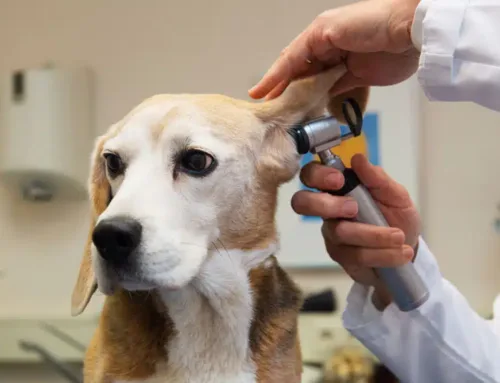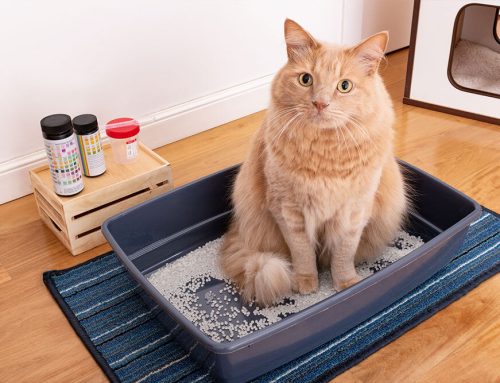Early sunsets and chilly temperatures let us know that winter is here and not going away anytime soon. Cozy fires and couch cuddles with your favorite four-legged companion are great ways to pass the time and stay warm. Although our winters don’t include snow storms or blizzards, the chilly rain and wind are reason enough to bundle up. The winter months can be a dangerous time for backyard pooches and felines who love being outside, because although they may seem to have a perfect built-in winter coat, they are still susceptible to low temperatures. Follow these tips from our Fairfax Veterinary Clinic team to ensure your furry friends stay safe and warm in cold weather.
#1: Recognize hypothermia signs in your pet
Prolonged exposure to chilly temperatures can cause hypothermia, a serious medical condition that occurs when your pet’s body temperature drops below 100 degrees. Your pet’s body temperature is much higher than a human’s, and ranges from 100 to 102.5 degrees. Ensure you limit your pet’s exposure to cold weather and keep them indoors as much as possible when temperatures drop.
Many pet parents enjoy taking their furry pals on car rides when they run their daily errands. However, leaving your pet in a parked car is as dangerous in the winter as in the hot summer months. Although your pet is sheltered from the wind and rain, inside the car can feel as cold as a refrigerator to your pet waiting for your return. Hypothermia signs in pets include:
- Muscle stiffness
- Shivering
- Lethargy
- Shallow or labored breathing
- Low heart rate
- Dilated pupils
- Pale or bluish skin
- Decreased appetite
- Rectal temperature below 98 degrees
Bring your pet inside immediately if they show hypothermia signs, cover them with warm blankets or towels, and call your veterinarian.
#2: Protect your pet’s paws and core
Many pet parents include their furry friends in their New Year’s resolutions to exercise more. Whether you are taking your pup for a walk around the block, to the dog park, or on an extended trail run, ensure they will stay warm in the cooler outdoors. Consider dressing your pet in a jacket or sweater that fits properly, and does not inhibit their natural movement or breathing. Additionally, protect your pet’s paws with boots that are snug but not tight fitting. For pets who refuse to wear or walk in booties, salves such as Musher’s Secret provide great paw protection and help ensure your pet is comfortable walking on cold or wet surfaces.
#3: Schedule your pet for a wellness exam
The New Year is a perfect time to schedule your pet for a winter wellness exam, especially if they are a senior pet. Older pets, or pets with chronic health issues such as diabetes, kidney disease, heart disease, or hormonal imbalances, have a harder time regulating their body temperature. Pets with arthritis may struggle more in the winter months. Cold weather can exacerbate arthritis signs, which include:
- Stiff gait, especially after a nap or exercise
- Pain when getting up or down
- Groaning or vocalizing when moving positions
- Reluctance to walk, jump, or play
- Irritability or behavior change
- Increased panting
- Limping
- Muscle wasting
During your pet’s wellness visit, your veterinarian will perform a nose-to-tail exam to look for signs of arthritis or any other illness that chilly weather may affect adversely. They may recommend blood work to check your pet’s organ function, especially if your pet needs an antiinflammatory medication to manage any pain.
#4: Know your pet’s limits

Pets with thick fur coats, such as Siberian huskies and Alaskan malamutes, may tolerate cold weather more easily, but all animals are susceptible to the effects of cold temperatures, so limit your pet’s time outside in the cold. Puppies and kittens are especially at risk in cold weather because of their limited fur coat and a metabolism that is insufficiently developed to keep them warm. Smaller pets, especially those with short fur coats, may become colder faster because their bellies and bodies are more likely to contact wet grass and cold ground. In general, if it’s too cold for you, it’s too cold for your pet.
Exposure to dry, cold air can also lead to chapped paws and itchy, flaky skin in your pet. Avoid extended walks or outdoor activities during chilly temperatures and never leave pets outside for long periods. Other safety tips include:
- Minimize bathing your pet, to preserve their natural oils that support a healthy coat and skin.
- Avoid shaving your pet’s fur coat.
- Dry your pet after walks or exposure to wet, cold weather.
- Avoid lakes or other water bodies, especially for breeds naturally drawn to swimming.
- Bring outdoor cats inside during colder months.
Our Fairfax Veterinary Clinic team wants to ensure your pets are safe through all seasons. Call our office if you have any questions about cold weather safety for your pet, or to schedule a winter wellness exam.








Leave A Comment